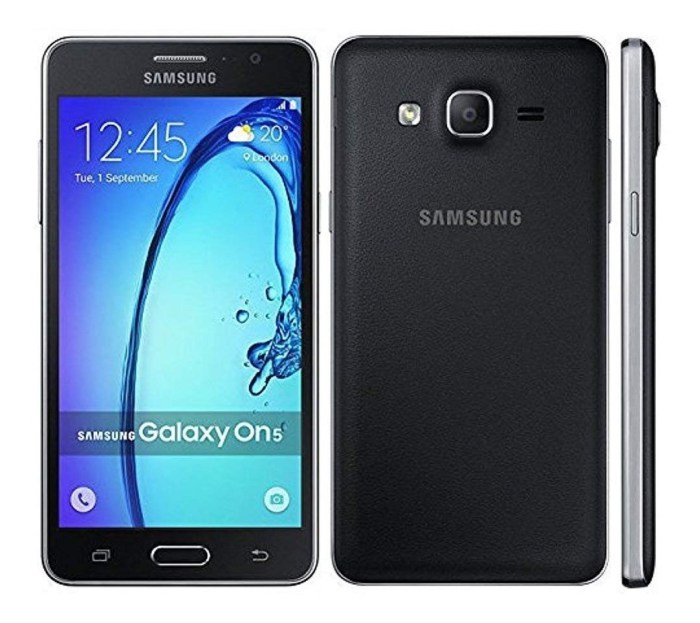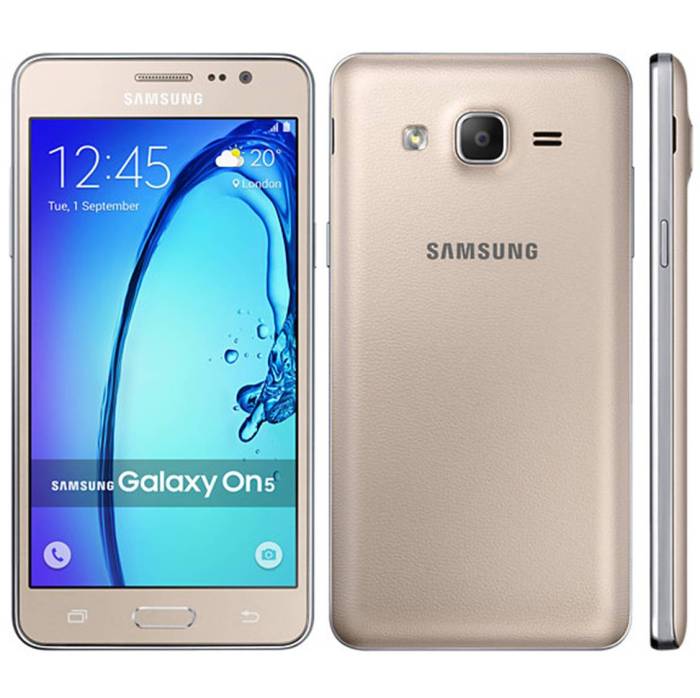Samsung Galaxy On5 Specification Overview
Samsung Galaxy On5: A Retrospective Look: Samsung Galaxy On 5 Specification
Samsung galaxy on 5 specification – The Samsung Galaxy On5, a budget-friendly smartphone launched in 2016, aimed to provide a compelling Android experience without breaking the bank. Targeted towards budget-conscious consumers and emerging markets, it offered a blend of essential features and Samsung’s signature design language. While not a flagship device, the On5 held its own against competitors in its price segment, offering a competitive value proposition for its time.
Display Specifications
The Galaxy On5 boasted a 5.0-inch PLS TFT LCD display with a resolution of 720 x 1280 pixels. While not as vibrant as AMOLED screens found in higher-end models, the display provided adequate clarity and viewing angles for everyday use. Compared to similar budget phones of the era, which often featured lower resolutions or smaller screen sizes, the On5 offered a reasonably good viewing experience.
The display’s brightness was sufficient for indoor use, but struggled a bit in direct sunlight.
Performance and Processor

Source: celularess.com
Powering the Galaxy On5 was a quad-core 1.3 GHz Cortex-A7 processor, paired with 1.5GB of RAM. Internal storage options typically included 8GB, expandable via microSD card. For everyday tasks like browsing, messaging, and social media, the On5 performed adequately. However, demanding games or multitasking could lead to noticeable lag. Benchmark scores were modest compared to more powerful contemporaries.
| Phone | Benchmark Score (AnTuTu, estimated) |
| Samsung Galaxy On5 | 30000-35000 |
| Lenovo A6000 | 28000-32000 |
| Xiaomi Redmi 3s | 35000-40000 |
Camera Capabilities
The Galaxy On5 featured an 8MP rear camera with autofocus and a 5MP front-facing camera. Image quality was acceptable in good lighting conditions, but struggled in low light. Video recording capabilities were limited to 720p resolution. Compared to other budget smartphones of the time, the camera performance was average, offering decent snapshots but lacking advanced features.
Battery Life and Charging
The device housed a 2600 mAh battery. Battery life varied depending on usage, but generally provided a full day of moderate use. Charging technology was standard, with a relatively long charging time (around 2-3 hours) to reach full capacity.
Operating System and Software
The Samsung Galaxy On5 initially shipped with Android 5.1 Lollipop. While it received some software updates, including security patches, it did not receive an upgrade to a major Android version like Android Marshmallow or Nougat. The user interface was Samsung’s TouchWiz, which was known for its customizations and features, albeit sometimes criticized for its performance impact.
| OS Version | Key Features |
|---|---|
| Android 5.1 Lollipop | Material Design, improved notifications, enhanced security features |
Connectivity and Sensors
Connectivity options included Wi-Fi 802.11 b/g/n, Bluetooth 4.0, GPS, and a microUSB port. Sensors included an accelerometer, proximity sensor, and light sensor. These connectivity options were standard for budget smartphones in 2016 and comparable to its competitors within the same price bracket.
Physical Design and Dimensions, Samsung galaxy on 5 specification

Source: com.pk
The Galaxy On5 had a fairly standard design for its time, featuring a plastic unibody construction. It was relatively compact and lightweight, making it comfortable to hold and use one-handed. The design elements were simple and understated, reflecting the phone’s budget-friendly nature. Precise dimensions and weight would need to be verified from original specifications.
Comparison to Similar Devices
The Galaxy On5 competed with a number of budget smartphones in 2016. Its performance and features were generally comparable to those offered by other brands in a similar price range. Key differentiators often came down to specific features, software experiences, and brand preference.
The Samsung Galaxy On5’s specifications, while decent for its time, are now considered dated. For a more contemporary Samsung experience with improved specs, you might consider exploring the features of a more modern model; for detailed information on a comparable option, check out the specifications for the Samsung Galaxy A5 phone, available here: samsung galaxy a5 phone specification.
Returning to the On5, its relatively modest processing power and screen resolution highlight the advancements in newer Samsung devices.
| Feature | Galaxy On5 | Lenovo A6000 | Xiaomi Redmi 3s |
| Processor | Quad-core 1.3 GHz Cortex-A7 | Quad-core 1.2 GHz Cortex-A7 | Octa-core 1.8 GHz Cortex-A53 |
| RAM | 1.5GB | 1GB | 2GB/3GB |
| Internal Storage | 8GB (expandable) | 8GB (expandable) | 16GB/32GB (expandable) |
User Experience and Feedback
User reviews of the Samsung Galaxy On5 were mixed. While many appreciated its affordability and acceptable performance for basic tasks, some criticized its limited processing power, average camera, and occasional software lag.
- Positive Feedback:
- Affordable price point
- Decent battery life
- Familiar Samsung interface
- Negative Feedback:
- Performance limitations with demanding apps
- Average camera quality
- Limited software updates
Key Questions Answered
Was the Samsung Galaxy On5 waterproof?
No, the Samsung Galaxy On5 did not have any official water resistance rating.
Did the Samsung Galaxy On5 support expandable storage?
Yes, it typically supported expandable storage via microSD card.
What was the typical price point of the Samsung Galaxy On5 at launch?
The pricing varied by region but generally fell within the budget smartphone range at launch.
What charging port did the Samsung Galaxy On5 use?
It most likely used a MicroUSB port.





















